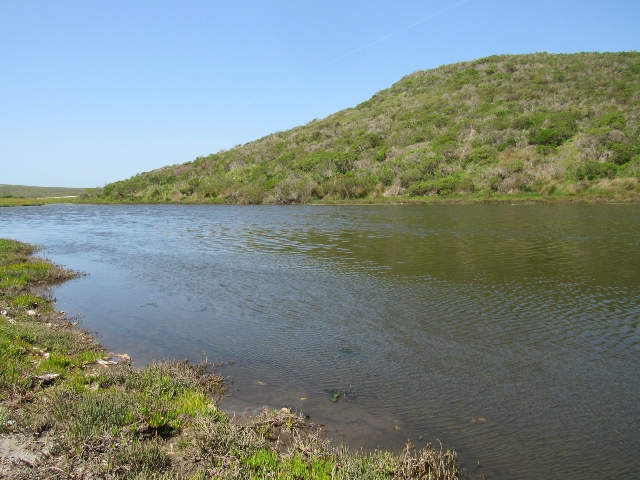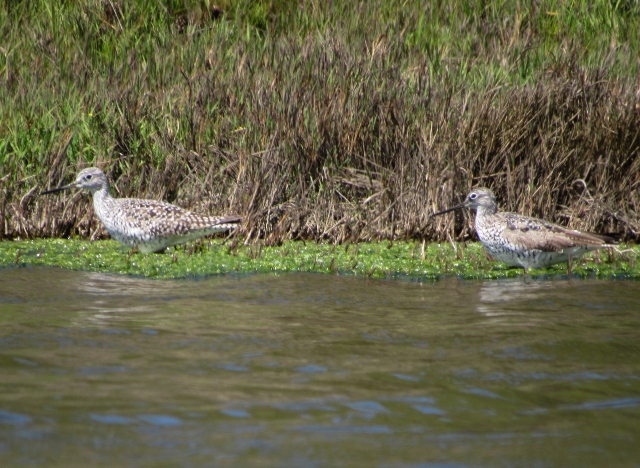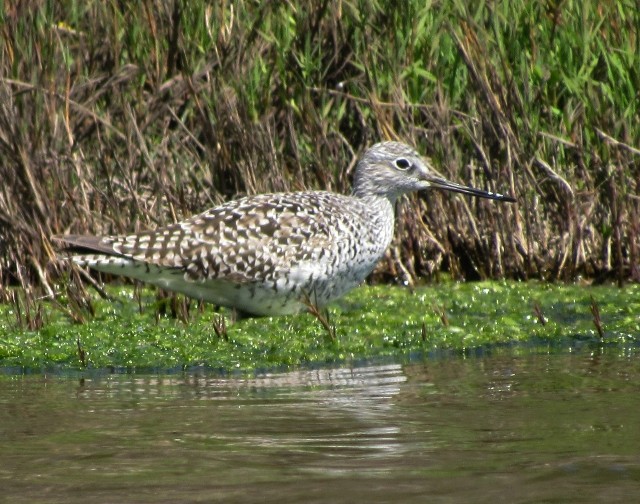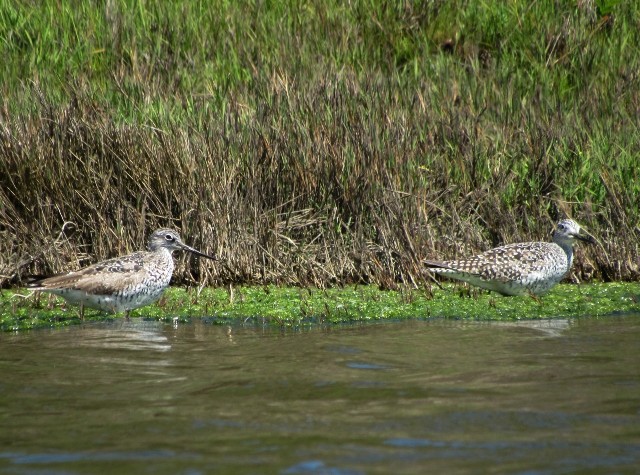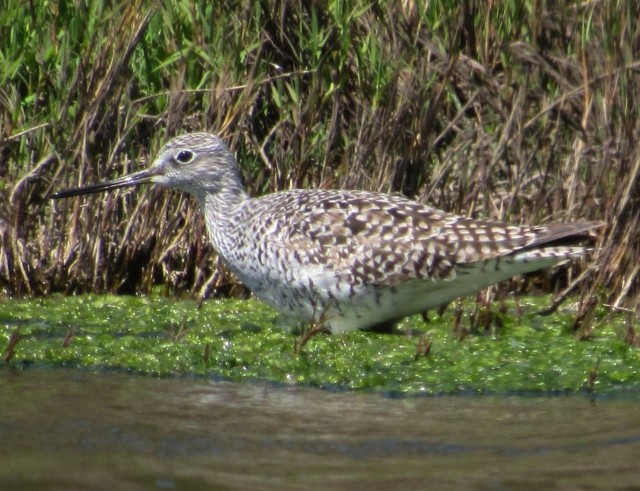While visiting Point Reyes National Seashore in California, I noticed a couple of slender, long-necked, small-headed birds with bright yellow legs near the waterway that I was exploring.
Often referred to as a “Marshpiper” for its habit of wading in deeper water than other sandpipers, the Greater Yellowlegs is heftier and longer-billed than its look-alike, the Lesser Yellowlegs. At different times of the year, this bird can be found throughout the United States.
At ponds and tidal creeks, this trim and elegant wader draws attention to itself by bobbing its head and calling loudly when an observer approaches. These birds forage in shallow water, sometimes using their bills to stir up the water. They mainly eat insects and small fish, as well as crustaceans, marine worms, frogs, seeds and berries.
Yellowlegs have also been called “tattlers,” because they would raise a alarm when bird hunters were near. Although shorebirds are now protected from hunting, yellowlegs may annoy birders by spooking other shorebirds with their alarm calls. It is a very noisy bird. It often runs in shallow water and bobs its head up and down when it spots a potential predator.
Despite its familiarity and widespread range, its tendency to nest in buggy bogs in the North American boreal forests make it one of the least-studied shorebirds on the continent.

